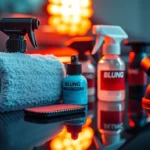Introduction: The Rising Threat of Bedwantsen in Modern Homes and Businesses
In recent years, the resurgence of bedwantsen, or bed bugs, has become a pressing concern for households, hospitality venues, healthcare institutions, and other sensitive environments. The global increase in travel, especially with the revival of international tourism, combined with the growth of short-stay accommodations and the interconnectedness of urban living, has significantly contributed to the spread of Cimex lectularius. These blood-feeding pests are notorious for their ability to quickly establish themselves in any environment where humans reside or gather, making prompt and effective Bedwantsen bestrijden essential to prevent escalation and long-term infestation.
Bedwantsen are expert hitchhikers, traveling unnoticed in luggage, clothing, furniture, and second-hand items. Once they find a suitable host and environment, their rapid reproductive capacity can turn a minor nuisance into a full-blown infestation within weeks. An infected female can lay hundreds of eggs during her lifetime, with each egg capable of developing into an active nymph, perpetuating the cycle of infestation. This article explores a comprehensive, professional approach to bedwantsen control, emphasizing the importance of early detection, strategic treatment, and ongoing prevention measures to maintain a bed bug-free environment.
Why Prompt Action Is Critical: Risks of Delay and Spread of Infestation
Delaying intervention in bedwantsen infestations can lead to exponential growth of the pest population, increased treatment complexity, and higher costs. Bedwantsen bites often cause itching, redness, and allergic reactions, but the real danger lies in their potential to cause sleep disturbances, psychological stress, and in some cases, secondary infections from scratching. Moreover, in sensitive environments such as hospitals, elderly care homes, or student residences, untreated infestations pose serious health risks and can compromise hygiene standards.
From a business perspective, especially in the hospitality industry, a bedwantsen outbreak can damage reputation, lead to negative reviews, and result in significant financial losses. The longer the infestation remains unaddressed, the more difficult it becomes to eradicate, as bedwantsen develop resistance to certain chemical treatments and can hide in tiny crevices inaccessible to conventional methods. This underscores the importance of immediate, professional pest control services that utilize integrated strategies combining detection, heat treatment, residual insecticides, and barrier methods to ensure swift and lasting results.
Understanding Bedwantsen Biology and Spread Routes
Biology of Bedwantsen
Bedwantsen are small, flat, oval-shaped insects measuring about 4-5 mm in length. They are nocturnal parasites that feed exclusively on blood, preferring human hosts but also capable of feeding on other warm-blooded animals. Their life cycle comprises five nymphal stages, each requiring a blood meal to molt into the next stage, culminating in the adult stage capable of reproduction. Under optimal conditions , their development from egg to adult takes roughly five weeks, allowing rapid population growth if untreated.
The eggs are tiny, white, and adhesive, sticking to surfaces such as mattress seams, furniture joints, or cracks in walls. Nymphs and adults tend to hide in dark, protected areas close to their blood sources, including mattress folds, bed frames, skirting boards, electrical outlets, and behind wallpaper or picture frames. Their resilience and ability to survive for extended periods without feeding—up to several months—make them especially challenging to eliminate.
Routes of Spread
Bedwantsen primarily spread passively via human activity. Common vectors include luggage, clothing, second-hand furniture, and bedding. Travel remains a significant factor, with infested hotels or transport vehicles serving as initial points of entry. Once introduced into a new environment, bedwantsen can quickly establish a colony, especially if preventive measures are not in place.
Other spread routes include proximity to infested units or neighboring rooms, especially in multi-unit buildings like apartment complexes, hotels, or dormitories. The pests can also hitchhike in used clothing or furniture purchased from second-hand stores. Their ability to survive long periods without feeding and their small size enable them to traverse narrow gaps and cracks, making thorough inspection and strategic containment vital for successful eradication.
Inspection and Detection Techniques: How Professionals Identify Bedwantsen Presence
Visual Inspection
Professional bedwantsen detection begins with meticulous visual inspections of high-risk areas. Inspectors use magnifying tools such as LED flashlights and magnifying glasses to examine mattress seams, bed frames, furniture joints, baseboards, electrical outlets, and wallpaper edges. They look for live insects, shed skins, eggs, and fecal spots—small dark or blackish specks resembling pepper flakes.
Use of Detection Dogs
One of the most effective detection methods is the use of specially trained bedwantsen detection dogs. These highly sensitive animals can identify the scent of bedwantsen pheromones with over 95% accuracy, even in early infestation stages. Dogs can quickly survey large areas and pinpoint hotspots, significantly reducing inspection time and increasing detection reliability.
Monitoring Devices and Traps
To complement visual inspections, professionals employ passive monitoring devices such as pheromone traps or glue strips placed under beds, behind furniture, and in suspected hiding spots. These traps can catch escaping bedwantsen and provide ongoing evidence of activity, aiding in treatment planning and monitoring. Regular inspections and trap checks help ensure that no infestations are overlooked and that treatment efficacy can be objectively evaluated.
Strategic Treatment Options: Heat Treatment, Residual Insecticides, and Barrier Methods
Heat Treatment
Heat treatment is a cornerstone of professional bedwantsen control due to its effectiveness against all life stages, including eggs. This method involves elevating room temperatures to at least 56°C for a minimum of 90 minutes, ensuring complete eradication. Mobile heat generators are strategically placed in the infested areas, uniformly heating the environment, including cracks, seams, and hidden spaces.
Because heat treatment is chemical-free, it is safe for sensitive environments like hospitals or homes with children and pets. Following the treatment, the room can be used immediately after cooling down. Heat treatment also minimizes residual chemical residues, reducing health risks associated with insecticide use.
Residual Insecticides
In cases where heat treatment alone is insufficient, residual insecticides are applied to targeted areas such as mattress seams, furniture joints, and baseboards. Micro-encapsulated pyrethroids or neonicotinoids with low vapor pressures are preferred for their safety profiles and long-lasting effects. These products form a thin film that kills bedwantsen upon contact and prevents re-infestation.
Application must comply with current regulations and safety standards to ensure responsible use. Particular attention is given to areas where liquids are less suitable, such as electrical outlets or electronics, where amorphous silicapoeder can be applied to damage the insect’s protective coating, leading to dehydration and death.
Barrier and Preventative Measures
Barrier methods include placing passive traps with pheromones under beds and furniture to monitor activity and catch emerging bedwantsen. Additionally, physical barriers like bed encasements and sealing cracks prevent reinfestation. These measures, combined with regular inspections, form an integrated defense system to maintain a bedwantsen-free environment over the long term.
Logistical Protocols for Long-term Prevention and Monitoring
Successful bedwantsen control extends beyond the initial treatment. Implementing strict logistical protocols ensures the sustainability of eradication efforts. After treatment, passive monitoring devices such as pheromone traps or glue strips are placed strategically in high-risk zones. These are checked weekly, and the data logged digitally for ongoing analysis.
When no activity is detected over an extended period—typically eight consecutive weeks—certification of a bedwantsen-free status is issued. If activity reemerges within 90 days, a free reinspection and plan adjustment are promptly undertaken to prevent a resurgence.
In sensitive settings such as hospitals, care homes, or student accommodations, a comprehensive IPM approach includes staff training, environmental sanitation, and proactive inspections. This integrated strategy minimizes chemical use and emphasizes early detection, reducing overall treatment costs and disruption.
Case Studies: Successful Bedwantsen Bestrijden in Sensitive Environments
Student Complex in Rotterdam
In a large student residence in Rotterdam, an initial complaint of bites prompted an immediate response from the pest control team. Using detection dogs, six rooms were identified as active hotspots. The team initiated a phased approach: first, applying heat treatment to all affected units, then sealing potential entry points with micro-encapsulated insecticides. Silicone powder was applied to electrical outlets and hidden niches. Over a two-week monitoring period, no further activity was detected, and residents were able to return to their rooms without delay. The comprehensive approach prevented further spread and minimized disruption during the academic year.
Healthcare Facility in Amsterdam
In a healthcare setting, bedwantsen presence posed a serious risk to patient safety. The facility adopted an IPM program combining heat treatment, residual insecticides, and pheromone traps. Staff received training on inspection techniques and sanitation protocols. Regular monitoring ensured early detection of any new activity. The facility achieved a bedwantsen-free status within three months, maintaining a safe environment for patients and staff alike.
Hotel Chain in the Netherlands
A well-known hotel chain experienced negative reviews following reports of bites. Professional intervention included detailed inspections, heat treatment of affected rooms, and the installation of pheromone traps. The hotel implemented strict luggage and linen protocols to prevent reintroduction. After eight weeks of continuous monitoring, the hotel received a certification of a bedwantsen-free environment, restoring guest confidence and protecting its reputation.
Cost Implications and Economic Impact of Bedwantsen Infestations
The economic consequences of bedwantsen infestations can be substantial. For hotels, a single infested room can incur costs upwards of €100 per night in lost revenue, cleaning, and treatment. Reputational damage may lead to decreased bookings and negative online reviews. Healthcare facilities face potential liability and increased sanitation costs, while private households endure psychological stress, property damage, and treatment expenses.
Preventive measures and early intervention are cost-effective strategies, often recouping investments through avoided long-term infestations. For example, conducting seasonal scans and staff training can significantly reduce the risk of extensive outbreaks, saving thousands of euros in remediation costs. Investing in professional, integrated control programs ensures that pests are managed efficiently, safeguarding both health and financial stability.
Implementing an Integrated Pest Management Approach
An IPM strategy combines multiple methods—inspection, detection, heat treatment, chemical control, and ongoing monitoring—to achieve sustainable bedwantsen management. The cornerstone is early detection, which enables targeted interventions before the infestation becomes widespread.
Key components include:
- Regular inspections by certified technicians using visual tools and detection dogs
- Use of pheromone traps for continuous activity monitoring
- Application of heat treatments to eliminate all life stages
- Selective use of residual insecticides adhering to safety standards
- Physical barriers such as mattress encasements and sealing of cracks
- Staff training and environmental sanitation to reduce hiding spots
Such a holistic approach minimizes chemical use, reduces resistance development, and provides measurable results. It also ensures compliance with health and safety regulations, making bedwantsen management transparent and accountable.
Frequently Asked Questions About Bedwantsen Bestrijden
1. How fast can bedwantsen infestations grow?
Under optimal conditions, an infestation can escalate from a single pregnant female to a large colony within five weeks, with hundreds of bedwantsen present in multiple stages of development.
2. Can I treat bedwantsen myself?
While DIY methods like steaming or using over-the-counter sprays can reduce minor issues, professional treatment is recommended for effective, comprehensive eradication, especially in established infestations.
3. Are chemical treatments safe?
When applied by certified professionals following current safety standards and regulations, residual insecticides are safe and effective. Non-chemical methods like heat treatment are also chemical-free, making them suitable for sensitive environments.
4. How long does treatment take?
Depending on the infestation size, initial treatment can be completed within a day, with follow-up inspections over subsequent weeks to confirm eradication.
5. What are the signs of bedwantsen presence?
Common signs include bites, blood spots on bedding, shed skins, fecal stains, and live insects in hidden areas near sleeping or resting zones.
Why Choose Professional Services Over DIY Methods
Professional bedwantsen control offers several advantages over DIY approaches. Certified technicians possess specialized training, detection dogs, and advanced equipment such as mobile heat generators and micro-encapsulated insecticides. They can accurately assess the extent of infestation, target treatment precisely, and monitor results over time. DIY treatments often fail to reach all hiding spots, may use inappropriate chemicals, and can inadvertently worsen the problem if not executed correctly. Investing in professional services ensures rapid, safe, and long-lasting eradication, ultimately saving time, money, and stress.
Conclusion: Ensuring a Bedwantsen-Free Environment with Rapid, Reliable Intervention
Bedwantsen infestations pose a serious threat to health, comfort, and reputation. Their resilience and ability to spread rapidly demand a strategic, professional approach combining early detection, effective treatment methods, and ongoing monitoring. The integrated pest management strategies outlined here—from heat treatment and residual insecticides to pheromone traps and environmental sanitation—provide a comprehensive roadmap to control and eliminate bedwantsen effectively.
By implementing a proactive, structured plan, organizations and households can transform bedwantsen control from a reactive crisis into a manageable aspect of quality assurance. Rapid response, expert intervention, and continuous vigilance are key to maintaining a bedwantsen-free environment. Don’t wait for an infestation to escalate—schedule a risk assessment today and secure peace of mind with proven, professional pest control solutions.
Remember: early detection and integrated treatment are your best defenses against bedwantsen. Protect your property, health, and reputation with trusted, professional Bedwantsen bestrijden services today.









